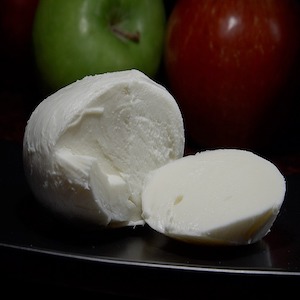Effect of a new sustainable cooling system used during firming and brining on the microbiological, chemical, and sensory characteristics of buffalo mozzarella cheese

Accepted: 24 May 2023
HTML: 12
All claims expressed in this article are solely those of the authors and do not necessarily represent those of their affiliated organizations, or those of the publisher, the editors and the reviewers. Any product that may be evaluated in this article or claim that may be made by its manufacturer is not guaranteed or endorsed by the publisher.
Authors
The cooling applied during the firming and brining processes represents an important production step in mozzarella cheese-making. The temperature fluctuations of the cooling water can negatively affect the hygiene, composition, and quality of mozzarella. Some sustainable cooling systems can minimize this problem by using hot process fluids as heat sources to generate refrigerated energy. This study aimed to evaluate the effects of a new cooling system equipped with a water-ammonia absorption chiller (MA) on the characteristics of buffalo mozzarella through a comparative study with products cooled with a traditional ice water chiller (MT). The buffalo mozzarella cheese manufacture was monitored, and the samples were analyzed for chemical, nutritional, microbiological, and sensory characteristics. The MT samples showed an overall weight loss of 7.4% compared to an average of 2.8% for the MA samples. The MT samples were characterized by greater sapidity than the MA ones, which instead showed a higher moisture content that increased juiciness. The microbiological analysis showed a lower concentration of mesophilic bacterial load in the MA samples than in the MT ones [difference of 1 Log (CFU/g)], which is probably due to the low and constant temperatures that reduced the permanence time of the mozzarella in the vats (firming and brining). This study represents a preliminary positive evaluation of the use of this sustainable cooling system for mozzarella cheese, which is useful for dairy plants with an annual cheese production volume sufficient to justify the operating cost of the plant and the annual energy cost.
How to Cite

This work is licensed under a Creative Commons Attribution-NonCommercial 4.0 International License.
PAGEPress has chosen to apply the Creative Commons Attribution NonCommercial 4.0 International License (CC BY-NC 4.0) to all manuscripts to be published.

 https://doi.org/10.4081/ijfs.2023.11290
https://doi.org/10.4081/ijfs.2023.11290



